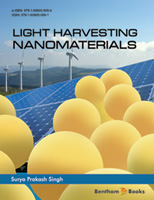Chemistry is central to science, engineering and medicine, and has been at the forefront of the development of advanced materials for applications ranging from personal electronics, lighting and displays, solar energy conversion, energy storage, through environmental remediation, to clinical diagnosis, and advanced therapies for the treatment of cancer.
In this book, Future Trends for Top Materials, my colleague Mário J. F. Calvete presents an extensive review of the chemistry of some of the most important materials for these applications. These include the pyrrole-based systems phthalocyanines, porphyrins, porphyrinoids, boron dipyrromethene (bodipy) dyes, together with polymethine (cyanine) systems, and the carbon allotropes of fullerenes, carbon nanotubes and graphene. Further, from our understanding of mechanisms, stereochemistry and chemical bonding, it is now possible to design molecular architecture with specific materials functions. Dendrimers, metal-organic and covalent- organic frameworks are discussed within this perspective. The author also considers relevant aspects of metal and semiconductor based nanoparticles, including superparamagnetic systems and quantum dots. In the final chapter, he summarizes possible achievements based on relevancy of the most important materials.
All of the systems discussed are treated in terms of their synthesis and functionalization, before discussing their most important applications (real and potential). Examples are given in catalysis, photovoltaics, sensing, imaging, nonlinear optics, optoelectronics, biomedicine… This book provides both a good starting point for those entering the field, and a presentation
of the state-of-the-art in for more experienced researchers.
The author is to be commended for both the breadth and depth of the work described, and for the extensive bibliography. This can form the basis for a course in advanced materials chemistry, but also acts as an excellent entry for those starting research in this area.
The author, Mário Calvete, has extensive experience in many of the topics discussed, and is to be commended for this excellent publication.
Hugh D. Burrows
Chemistry Department
University of Coimbra,
Portugal




